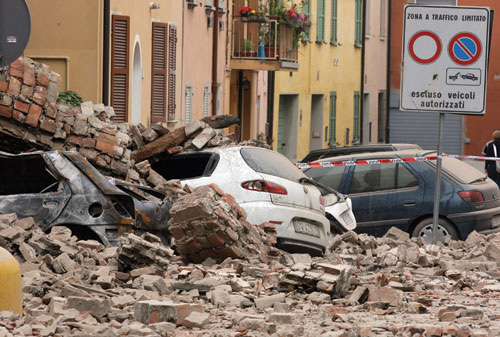Published on: 9/07/2019
Over the past 2,000 years, Lebanon has experienced over 13 major earthquakes. These tremors are a result of the country’s location within an active tectonic system called the Dead Sea Rift, which divides the African and Arabian plates.
One of Lebanon’s most devastating earthquakes occurred in 551 AD, a 7.5 magnitude quake along the Mount Lebanon Thrust (MLT) resulted in a tsunami, which, according to a 2007 paper in the journal Geology, “destroyed most of the coastal cities,” “drowned Tripoli,” and caused damage so severe that Beirut “did not recover for 1,300 years.”
Seismologists predict that the MLT has a recurring cycle of every 1,500-1,750 years, meaning a major earthquake could fall anytime within the next 250 years. The World Bank’s Global Facility for Disaster Risk Reduction (GFDRR) puts Lebanon at a medium-risk level, estimating that there is a 10 percent chance for a potentially-damaging earthquake and tsunami to occur within the next 50 years.
Additionally, Lebanon’s offshore oil and gas operations are scheduled to begin along the MLT, and could trigger a larger earthquake in a shorter time frame. A 2016 article in Scientific American highlighted that “scientists are increasingly confident about the link between earthquakes and oil and gas production,” while criticizing regulators for being slow to react.
To mitigate these risks, the government, with the support of international agencies, has been working to improve the country’s resilience to disasters. The government established a Disaster Risk Management Unit in 2009, followed by the National Coordination Committee on Disaster Risk Reduction in 2013, the latter of which has been setting up a network of emergency control rooms, conducting drills and simulations, and raising awareness.
Despite these steps, the GFDRR notes that Lebanon still “does not have an operational disaster management plan.” With the overall risk of earthquakes in Lebanon coupled with the potential seismic tremors of the MLT and ongoing offshore oil and gas activities, it is time to begin the conversation and make a consolidated effort toward preparing for the worst. In addition to saving lives, the World Bank estimates that every dollar invested in disaster prevention saves $4 in disaster damage.
The Sendai Framework for Disaster Risk Reduction outlines principles and global best practices that aim to improve global resilience to natural or man-made hazards. These range from governance structures to policies, tactics, and technology, as well as rescue guidelines. One key aspect is insurance. A 2015 OECD report finds that ability to mobilize finances quickly to pay for rescue operations, compensate victims, and rebuild destroyed property after a disaster is a key challenge most governments need to overcome.
Similar to conventional insurance schemes, the system works by pooling financial resources from a large number of people in advance of a disaster, and then using these funds to compensate potential victims for natural or man-made hazards. However, the technicalities of the scheme varies, which allows room for innovation.
In some developed countries, insurance firms offer private disaster insurance cover. These schemes, however, usually cover businesses and tend to be unaffordable for the more vulnerable lower-income households or companies. Alternatively, government-supported insurance programs are becoming increasingly popular across developing countries. In this system, stakeholders pay a mandatory—usually affordable—premium that is used to finance a common fund—usually reinsured on the global private insurance market—that is then accessible for disaster relief in case of a catastrophe.
In Morocco, draft law 110-14 seeks to add a compulsory, affordable tariff to existing car insurance policies to fully cover 5 million people against catastrophes. The fees contribute to a national solidarity fund that will compensate uninsured victims in case a catastrophic event causes personal harm or damage to a family’s primary residence.
In my opinion, Lebanon’s caisse mutuelle (mutual fund) system provides an excellent infrastructure for citizens to voluntarily create a common pool disaster insurance autonomously from the government. A group of stakeholders can band together, agree on the terms and conditions for payouts, and contribute directly to a mutual fund that protects against natural or manmade hazards. The same funds can likely be reinsured on the private market as well, enabling access to more money when people might need it the most. The current framework provides a good stepping stone that could pave the way—with the right reforms, control, and oversight—for a national one. It is time to start the conversation, and ensure Lebanon will be ready when the time comes.
Source: Executive Magazine
Tags: Earthquake Risk
